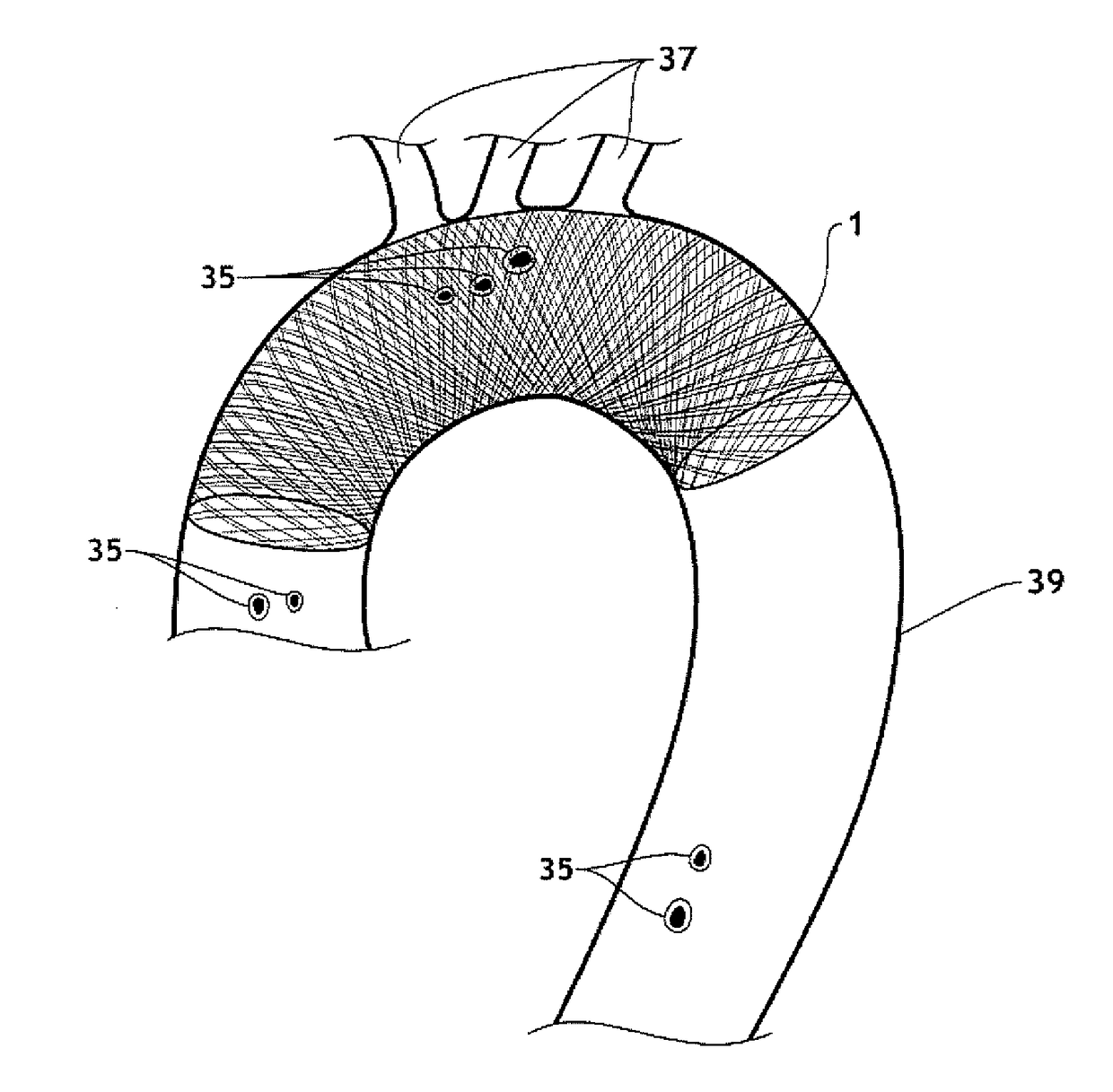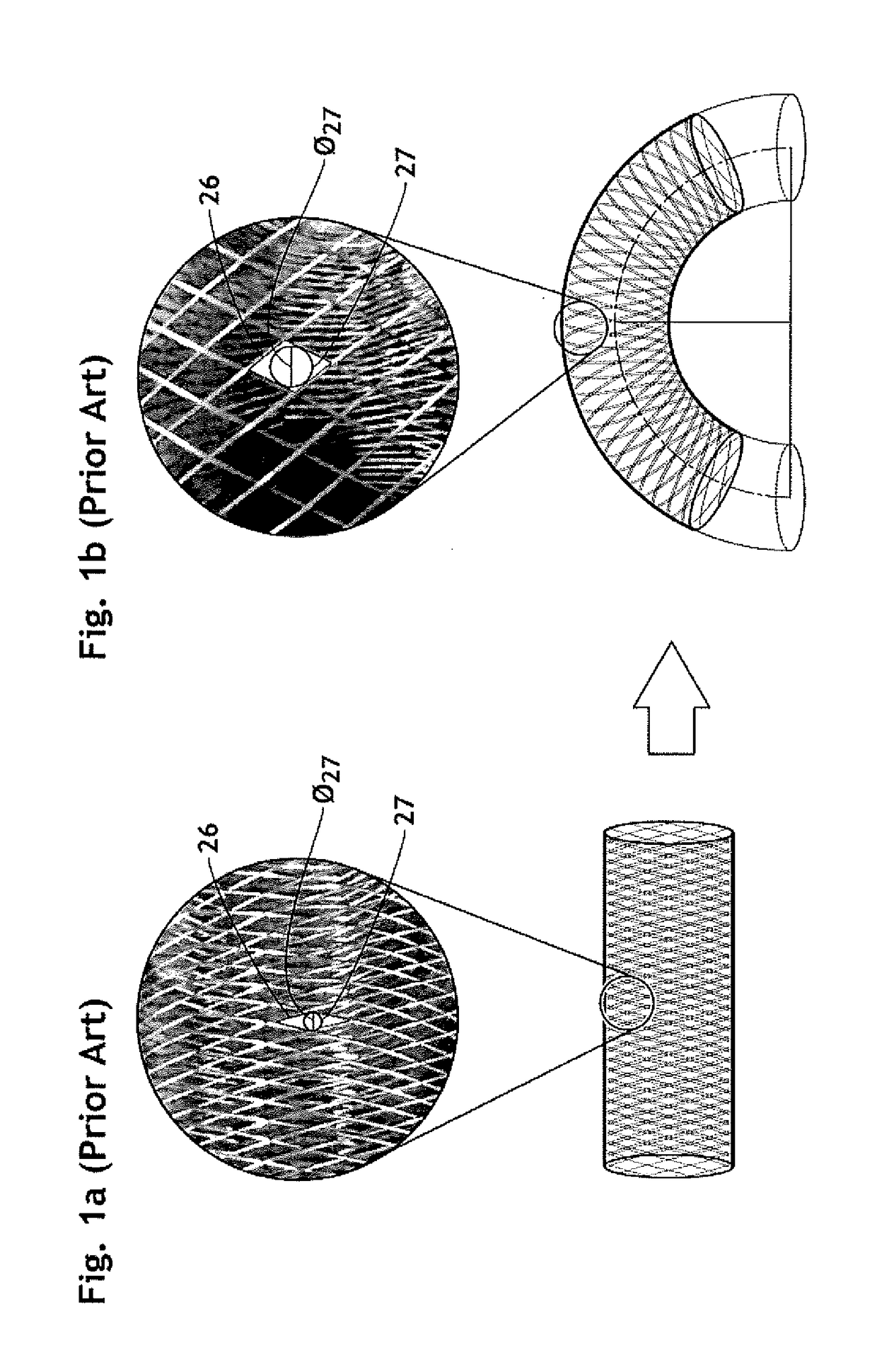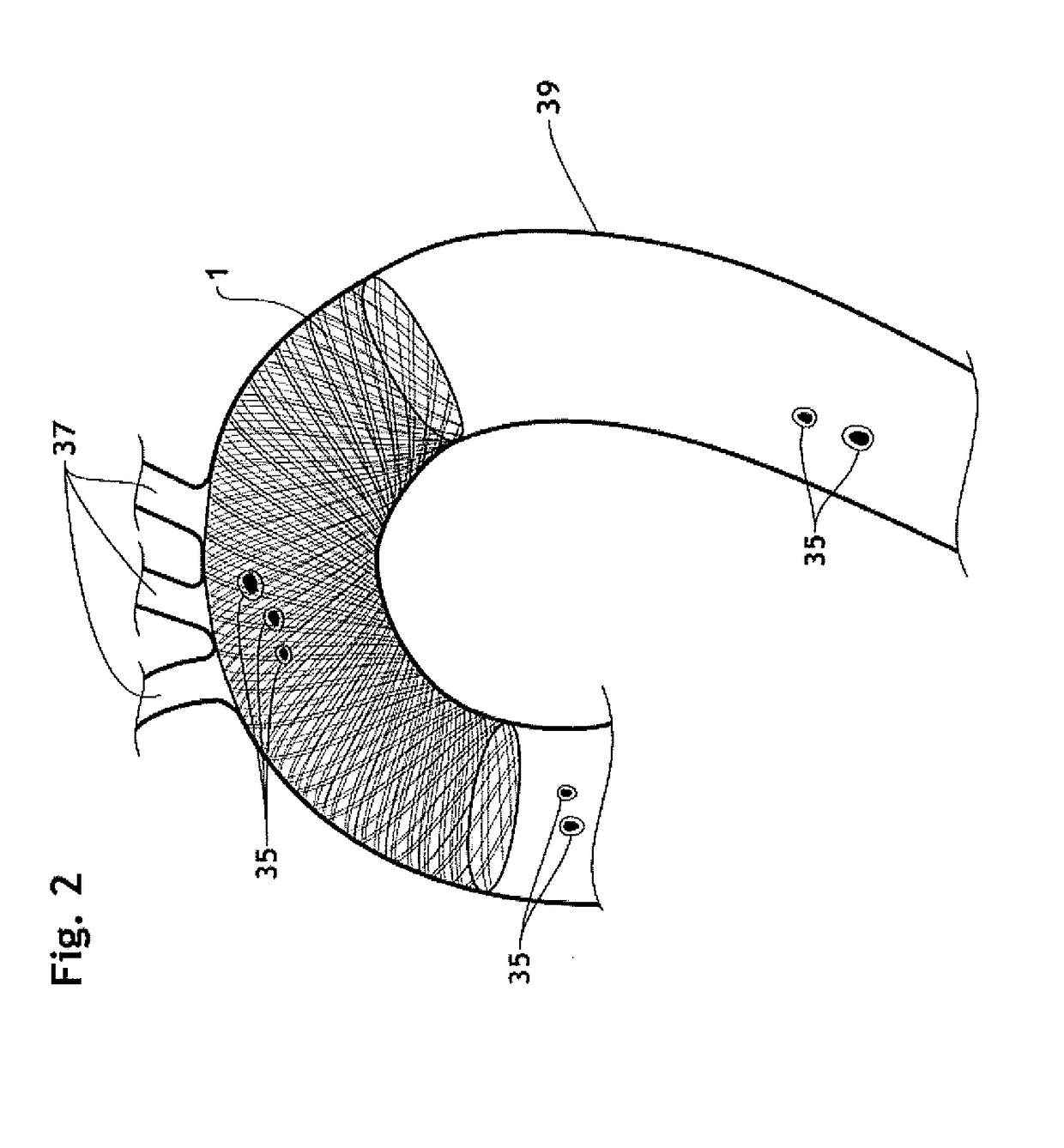3D filter for prevention of stroke
a technology of 3d filter and stroke, which is applied in the field of implantable endoluminal prosthesis, can solve the problems of inability to detect the bleeding, the risk of hemorrhage is particularly serious, and the subtherapeutic effect, and achieve the effect of preventing the bleeding of the extracranial embolus
- Summary
- Abstract
- Description
- Claims
- Application Information
AI Technical Summary
Benefits of technology
Problems solved by technology
Method used
Image
Examples
Embodiment Construction
[0049]As used herein, the term “implantable” refers to an ability of a medical device to be positioned at a location within a body vessel. Implantable medical device can be configured for transient placement within a body vessel during a medical intervention (e.g., seconds, minutes, hours), or to remain in a body vessel permanently.
[0050]The terms “endoluminal” or “transluminal” prosthesis refers to a device adapted for placement in a curved or straight body vessel by procedures wherein the prosthesis is advanced within and through the lumen of a body vessel from a remote location to a target site within the body vessel. In vascular procedures, a medical device can typically be introduced “endovascularly” using a catheter over a wire guide under fluoroscopic guidance. The catheters and wire guides may be introduced through conventional access sites in to the vascular system.
[0051]The term “catheter” refers to a tube that is inserted into a blood vessel to access the target site. In ...
PUM
| Property | Measurement | Unit |
|---|---|---|
| Fraction | aaaaa | aaaaa |
| Fraction | aaaaa | aaaaa |
| Fraction | aaaaa | aaaaa |
Abstract
Description
Claims
Application Information
 Login to View More
Login to View More - R&D
- Intellectual Property
- Life Sciences
- Materials
- Tech Scout
- Unparalleled Data Quality
- Higher Quality Content
- 60% Fewer Hallucinations
Browse by: Latest US Patents, China's latest patents, Technical Efficacy Thesaurus, Application Domain, Technology Topic, Popular Technical Reports.
© 2025 PatSnap. All rights reserved.Legal|Privacy policy|Modern Slavery Act Transparency Statement|Sitemap|About US| Contact US: help@patsnap.com



